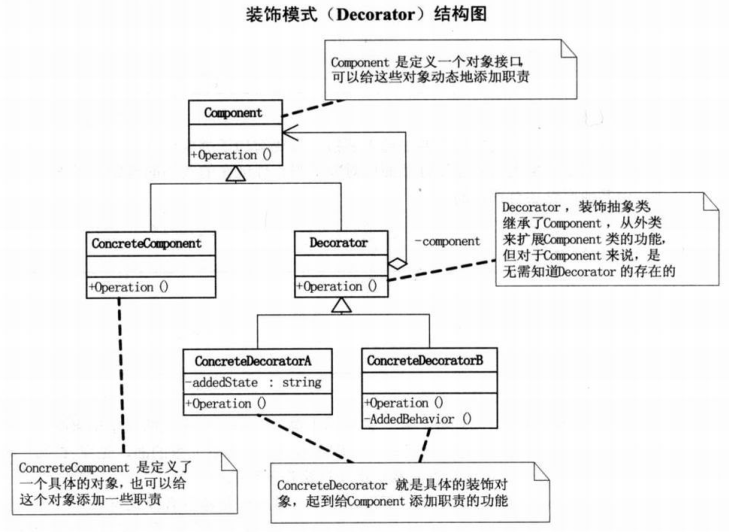

穿衣服示例:

1.ConcreteComponent(人类):
public class Person { public virtual void Show() { Console.Write("开始装扮:"); } }
2.Decorator(服饰类):
public class Finery:Person { protected Person component; public void Decorate(Person component) { this.component = component; } public override void Show() { if(component!=null) { component.Show(); } } }
3.ConcreteDecorator(具体服饰类,以垮裤类为例):
public class BigTrouser:Finery { public override void Show() { base.Show();//首先运行原Component的操作,再执行本类的操作 Console.Write("垮裤 "); } }
4.客户端代码:
class Program { static void Main(string[] args) { Person person = new Person(); BigTrouser bigTrouser = new BigTrouser(); TShirts tShirts = new TShirts(); LeatherShoes leatherShoes = new LeatherShoes(); bigTrouser.Decorate(person); tShirts.Decorate(bigTrouser); leatherShoes.Decorate(tShirts); leatherShoes.Show(); } }
如果只有一个ConcreteComponent类而没有抽象的Component类,那么Decorator类可以是ConcreteComponent的一个子类。同样道理,如果只有一个ConcreteDecorator类,那就没有必要建立一个单独的Decorator类,而可以把Decorator和ConcreteDecorator的责任合并成一个类。
装饰模式是为已有功能动态添加更多功能的一种方式。
优点:有效地把类的核心职责和装饰功能区分开,而且可以去除相关类中重复的逻辑。